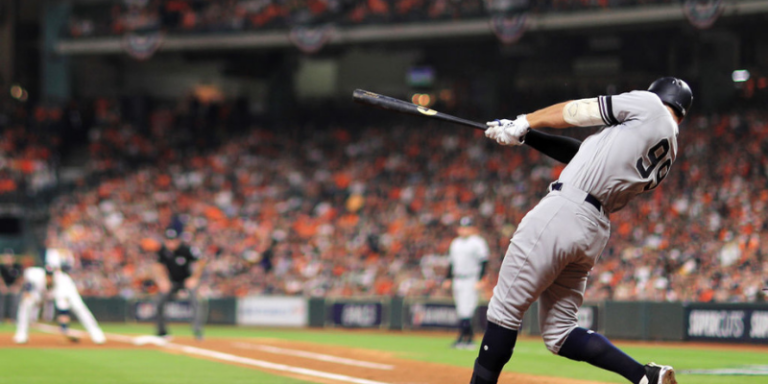Baseball and Economics: Part I
There’s more economics to baseball than you might have known.
By: Andrew Moran | January 23, 2020 | 506 Words

(Photo by Mike Ehrmann/Getty Images)
Baseball is a game of failure; you are going to groundout, flyout, and strikeout more than you are going to get a base hit or a walk. And there’s a lot that the sport can teach about economics, too. Let’s explore some of the various economic principles that Major League Baseball (MLB) teaches us.
Creative Destruction
In economics, creative destruction, also known as Schumpeter’s gale, is the process of ending conventional practices to make room for innovation. You find this at play in every industry.
From the way pitchers throw from the stretch to the way the defense is positioned on the diamond, ballclubs are always searching for a competitive edge, and the only way to achieve this is by employing unique strategies and tactics.
The best example of creative destruction in the MLB is the infield shift. You will see third basemen playing on the other side of second base to prevent left-handed batters from placing the ball into the gap between fielders. Also, thanks to advanced analytics, teams are further maneuvering players to spots where the hitters – left- and right-handed – are more likely to place their balls.
Subjective Value
The subjective theory of value is the concept that a good’s or a service’s worth is not innate but rather determined by consumers based on how much they want or need the object. This economic principle can be found in every component of professional baseball. Everyone is participating in it, too: the owners, the players, and even the fans.
Many people will say that it is ridiculous to pay one athlete $324 million over nine years. But that is exactly what the New York Yankees did when they signed Gerrit Cole. The Boston Red Sox thought it was worth signing David Price to a $217 million contract.
 This is a lot of money to spend on just one guy, especially when you have nine players on the field and 25 men on the main roster. Owners who sign these players have a couple of things in mind when handing out such lucrative contracts, including marketing dollars and championships. If your team has a superstar, then the idea is that fans are more likely to see the team. If that player helps the club win a championship, then paying a single person $27 million a year was worth the cost.
This is a lot of money to spend on just one guy, especially when you have nine players on the field and 25 men on the main roster. Owners who sign these players have a couple of things in mind when handing out such lucrative contracts, including marketing dollars and championships. If your team has a superstar, then the idea is that fans are more likely to see the team. If that player helps the club win a championship, then paying a single person $27 million a year was worth the cost.
Fans make similar decisions but on a much smaller scale. When they visit Fenway Park (Red Sox) or Citi Field (New York Mets), they are paying $30, $50, or $200 for tickets, proving that they value the tickets more than the cash. Plus, these fans will pay premium prices for hot dogs and beer, showing, once again, that they prefer to consume ballpark food and drinks than to keep their hard-earned money.
To non-baseball fans, It might seem like a waste of money and time. However, baseball fans might think the same about any other hobby. It is all about subjective value.
In part two, we’ll examine a few more principles common to both baseball and economics.
















